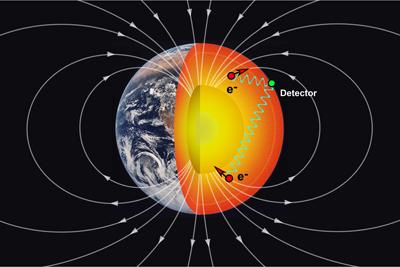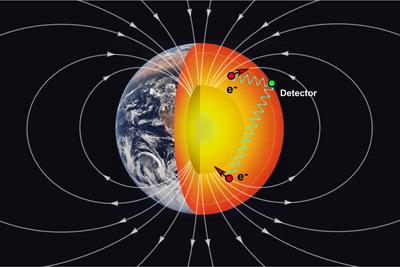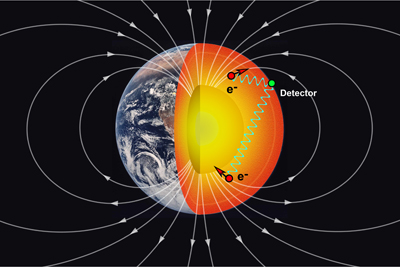The four known forces in physics—gravity, electromagnetism, and the strong and weak nuclear forces—might soon be joined by a fifth, known as the long-range spin-spin interaction.
U.S. researchers have made progress in the quest to find this fifth force. The goal of their study was to find out if the force might help detect spin-polarized electrons deep inside our planet.
“The most rewarding and surprising thing about this project was realizing that particle physics could actually be used to study the deep Earth,” study co-author Jung-Fu “Afu” Lin said in a press release.
Electrons have a property called “spin,” which is a bit like an arrow that points a certain way. Some of the electrons in Earth’s mantle are spin-polarized because of Earth’s magnetic field, which means instead of pointing in random directions, their spins tend to orient themselves with the magnetic field.
The researchers wondered if these electrons would affect subatomic particles in labs on the surface. They created a map of the spin-polarized electrons in Earth’s interior and used it to predict interactions between them and the particles in labs.
“This is the long-range spin-spin interaction we are looking for,” study co-author Larry Hunter explained in the release.
“No one had previously thought about the possible interactions that might occur between the Earth’s spin-polarized electrons and precision laboratory spin-measurements.”
Their experiments didn’t detect any such interactions, so they haven’t yet found the elusive fifth force. However, the results were still useful because they showed that if there is a fifth force, it’s extremely weak.
“If the long-range spin-spin interactions are discovered in future experiments, geoscientists can eventually use such information to reliably understand the geochemistry and geophysics of the planet’s interior,” Lin added.
The paper was published in the Feb. 22 issue of the journal Science.
The Epoch Times publishes in 35 countries and in 21 languages. Subscribe to our e-newsletter.







Friends Read Free